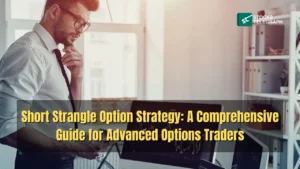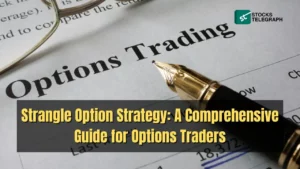Options trading is a popular approach for investors seeking to capitalize on price movements in the stock market. Among the array of options strategies available, the straddle and strangle are two commonly employed strategies that offer distinct advantages and risks.
The straddle and strangle options strategies are known for their flexibility in profiting from price movements in either direction. However, they are used in different market conditions and can suit different trading objectives.
Understanding the nuances between the straddle vs strangle options approaches can empower traders to make informed decisions and optimize their options trading strategy.
In this article, we will conduct a comparative analysis of the straddle vs strangle options strategies, examining their key differences in terms of potential for profit, risk levels, and suitability for different market conditions.
By gaining a deeper understanding of these strategies, options traders can enhance their trading skills and make well-informed decisions when utilizing the straddle or strangle options strategies.
What Is The Straddle Vs Strangle Options?
Before we begin our comparison between the straddle vs strangle approaches, it would be prudent to take a closer look at each strategy individually, understanding their unique characteristics, potential for profit, and inherent risks.
By gaining a comprehensive understanding of each strategy on its own, we can then move on to comparing them against each other to identify the advantages and disadvantages of each in different trading scenarios.
Straddle Option
To begin, we first look into the straddle option, which is a highly renowned trading strategy that is implemented by day traders. The approach involves buying both a call and put option, for an underlying asset with the same strike price and expiration date.
Having a strategy set up where the underlying asset is covered by both a call and put would allow the trader to profit regardless of which direction the asset’s price moves, as long as it surpasses the premium for the options paid.
The straddle option, therefore, is basically a way to bet on both directions, as long as the movement is sharp enough to pay for the cost of the options.
Strangle Option
We now move on to take a look at the strangle option, which at first glance appears to be highly similar to the straddle option. It also involves buying a call and put option for an underlying asset that has the same expiration date.
The only difference with the strangle option is that the call and put options hold different strike prices. Although this may appear to be only a minor tweaking, it has a major strategic implication and sets the core distinction between the straddle vs strangle options.
Because of different strike prices for both the call and put, the strangle option allows for a trader to make a gain, as long as the asset’s price moves between the range of each strike price.
The strangle option is, therefore, used in the case where a trader is looking to make a gain by a narrow, rather than sharp movement. It is due to this narrow, restrictive movement that the approach is called a ‘strangle’.
What Is Strangle Vs Straddle Option Strategy?
Now that we have assessed both straddle vs strangle options, and understand their core distinction being strike price, we can now turn to compare each of these in terms of their strategies:
Straddle Option Strategy
As stated above, the straddle strategy allows the trader to profit from both upward and downward price movements. For this reason, it is most appropriate when a trader expects a significant price movement in the underlying asset, but is uncertain about its direction.
The straddle option is beneficial in situations where there may be an anticipated event or announcement that could trigger substantial price volatility, such as earnings reports, merger announcements, or regulatory decisions.
Traders may use the straddle strategy to take advantage of such events, as the stock price may experience a sharp move in either direction.
Strangle Option Strategy
Moving on with our comparative assessment of the strangle vs straddle option strategy, we now turn to assess the strangle option from a strategic lens.
As discussed earlier, the strangle involves setting up a narrow range between strike prices. For this reason, the strangle option is most appropriate when a trader expects moderate price movement in the underlying asset, in either direction.
The strangle option strategy can be used when the trader wants to potentially profit from price movements in either direction and is willing to accept a lower cost compared to a straddle.
Why Are Strangle Stocks Important For Investors?
Having gone over the most crucial strategic differences between straddle vs strangle options, we now investigate a more fundamental question, relating to strangle stocks, and why they are so important for investors.
Strangle stocks simply refer to stocks trading in the market upon which the strangle option strategy can be applied. Discussed below are the reasons why they are extremely valuable, from an investor’s standpoint:
-
Risk Management
The strangle strategy allows traders to manage their risks by defining their maximum potential loss up front. The premium paid for the options is the maximum risk in the trade, which may be lower compared to other strategies like buying stocks directly.
-
Flexibility
Applying strangles to stocks provides flexibility to traders as it allows them to potentially profit from price movements in either direction. Moreover, it is a specialized strategy to adopt when one expects moderate, rather than sharp movement in price.
-
Diversification Benefits
A trader should apply a wide range of strategies, rather than pinning their hopes on a singular approach. For this reason, making use of the strangle tactic with stocks offers positive diversification benefits.
-
Profit Maximization
The strangle strategy offers the potential for unlimited profit if the underlying stock price makes a substantial move in either direction beyond the breakeven points of the strategy.
What Is The Difference Between Long Straddle Vs Long Strangle?
Another way to refer to straddle and strangle options is by calling them the long straddle and long strangle. This is because they both involve buying options and thus taking long positions on an asset.
While emphasizing these long positions, we discuss some of the primary differences between the long straddle vs long strangle approach, below:
-
Cost
A long straddle typically costs more than a long strangle because the options have the same strike price, resulting in higher premium costs.
-
Breakeven
The breakeven points for a long straddle are closer to the current price compared to a long strangle, which has wider breakeven points due to the different strike prices of the call and put options.
-
Profit Potential
A long straddle has higher profit potential if the underlying asset experiences a significant price movement, while a long strangle has higher profit potential if the price movement is moderate and doesn’t exceed the breakeven points.
-
Degree of Risk
A long straddle has a higher degree of risk as the price needs to move more to cover the premium cost, while a long strangle has lower risk as the premium costs are typically lower.
-
Directional Bias
A long straddle is a neutral strategy without bias, but a long strangle can accommodate for bias, in terms of setting up the range between the strike prices of call and put options.
Which Is More Profitable Straddle Or Strangle?
When looking into the profitability of the strangle vs straddle option strategy, it is important to understand that profitability ultimately depends on various factors, including market conditions, price movement, volatility, as well as specific strike prices and expiration dates picked.
In certain situations, the straddle can be more profitable, if the underlying asset experiences a significant price movement, as both the call and put options can generate profits.
However, the straddle also has higher premium costs, requiring a larger price movement to cover the premium and achieve profitability.
Alternatively, the strangle may be more profitable in scenarios where the price movement is moderate and does not exceed the breakeven points. Therefore, it can potentially be profitable due to lower premium costs.
Overall, the straddle is considered to have a higher potential for turning in a profit, due to its unlimited upside. But ultimately, this would depend on the specific circumstances of the trade.
Conclusion
The straddle and strangle options strategies are popular among traders seeking to capitalize on market volatility and price movements. Each strategy has its unique characteristics and may be more suitable for different market conditions or trader preferences.
The straddle strategy, with its simultaneous purchase of a call and put option at the same strike price and expiration date, can offer higher profit potential if there is a significant price movement in either direction.
Alternatively, the strangle strategy, with its purchase of a call and put option at different strike prices, may have lower premium costs compared to the straddle. It offers more flexibility in terms of price range and can be ideal for traders who anticipate moderate price movements.
Ultimately, the choice between a straddle vs strangle options strategy depends on a trader’s individual circumstances and market conditions. Understanding the key differences and risks associated with each strategy is essential for making informed trading decisions
FAQs
Which is Safer Straddle or Strangle?
The strangle strategy is generally considered to be safer compared to the straddle strategy, as it typically involves lower premium costs and risks. This is because the strangle uses a narrow range, expecting moderate movement.
How Do You Choose a Straddle Option Strategy?
To choose a straddle option strategy, consider factors such as market outlook, anticipated price movements, and risk tolerance. Straddle may be suitable if expecting significant price changes, while also accounting for premium costs and risks
Is Straddle the Best Option Strategy?
The straddle option strategy is not universally considered the best option strategy, as its suitability depends on individual circumstances, market conditions, and trader objectives. It can be profitable in certain situations but also carries higher premium costs and risks.











